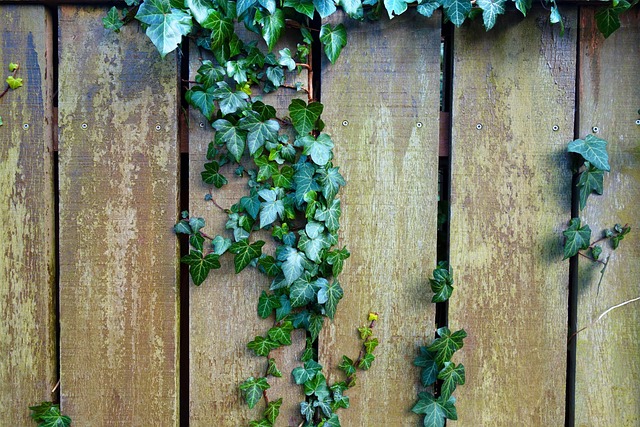In coastal regions, where harsh weather conditions and salt air pose unique challenges, durable wooden fencing is a sought-after solution. This article guides homeowners and builders through the process of selecting and installing robust fence systems designed to withstand the rigors of the coast. We’ll explore the benefits of wood as a sustainable material, offering both aesthetic appeal and longevity. From understanding local regulations to maintenance strategies, readers will gain insights into creating strong, beautiful barriers that protect properties and enhance coastal landscapes.
- Understanding Coastal Fence Requirements
- Advantages of Wooden Fencing for Coastlines
- Choosing the Right Wood Species for Durability
- Installation Techniques for Seaside Locations
- Maintenance Tips for Longevity
- Environmental Benefits and Aesthetics
Understanding Coastal Fence Requirements
In coastal areas, understanding the specific requirements for fencing is paramount due to the unique environmental challenges. Saltwater exposure, strong winds, and varying temperatures can significantly impact fence longevity. Durable wooden fencing designed for these regions needs to be constructed with weather-resistant materials and advanced treatments to prevent rot and corrosion.
Key considerations include using species of wood naturally resistant to moisture, such as cedar or treated timber, and incorporating design elements that minimize water accumulation. Double-sided sealing and coatings can further enhance protection, ensuring the fence remains robust against the coastal climate for years to come.
Advantages of Wooden Fencing for Coastlines
Wooden fencing offers numerous advantages for coastal areas, making it a popular choice among homeowners and property managers. One of its key strengths is durability. Treated wooden fences can withstand harsh weather conditions, including high winds, heavy rains, and salt mist from the ocean, which makes them ideal for coastal environments. Unlike other materials that may corrode or become brittle in these conditions, wood remains strong and resilient.
Additionally, wooden fencing provides excellent privacy and security. They can be designed to create a natural barrier, blocking out unwanted views while still allowing natural light and air to pass through. This blend of functionality and aesthetics is particularly appealing for coastal properties where outdoor living spaces are highly valued. Moreover, wood has a lower environmental impact than many synthetic materials, making it an eco-friendly option for those concerned about sustainability.
Choosing the Right Wood Species for Durability
When selecting wood for coastal fencing, understanding its durability is key. Not all woods are created equal when facing the harsh elements of a seaside environment. The right choice should be resistant to moisture, rot, and insect damage, attributes that determine how long your fence will last.
Hardwood species like cedar, redwood, and teak are popular for their natural resistance to decay and insects. These woods have high oil and resin content, which acts as a natural preservative. Softwoods such as treated pine can also be used, but they may require more maintenance over time. Consider the local climate, exposure to sunlight and moisture, and your budget when making this crucial decision.
Installation Techniques for Seaside Locations
When installing wooden fencing in coastal areas, special considerations must be taken due to the harsh marine environment. One effective technique involves using a combination of pre-treated, durable wood species like cedar or redwood, and specialized installation methods. This includes elevating the fence above ground level to prevent direct contact with moisture, ensuring proper drainage, and using corrosion-resistant hardware.
Another crucial step is sealing and finishing the fence regularly to protect it from salt spray and UV radiation. Professional installers often recommend a two-layer approach: first, an exterior paint or stain to provide initial protection, followed by a clear sealant to create a barrier against water and sunlight. Regular inspections and maintenance are vital to ensure the longevity of these fences in challenging coastal settings.
Maintenance Tips for Longevity
To ensure your wooden fencing lasts for years to come, regular maintenance is key. Start by cleaning the fence at least once a year using a mild detergent and soft brush to remove any salt spray or algae buildup. This prevents water penetration that can cause rot. Then, apply a fresh coat of weatherproof sealant every two to three years, depending on exposure to elements. Inspect for any damaged or loose boards, and replace as needed to maintain structural integrity. Keep the area around the fence clear of debris to prevent moisture entrapment and encourage proper drainage. Lastly, avoid using metal tools near the wood to prevent rust stains.
Environmental Benefits and Aesthetics
Durable wooden fencing offers more than just functional benefits for coastal areas; it also contributes to environmental sustainability and aesthetic appeal. The use of wood as a primary material is particularly advantageous in coastal regions due to its natural ability to withstand harsh weather conditions, including high winds and salt mist, which often plague these areas. Unlike synthetic materials that can leach harmful chemicals into the ecosystem, properly treated wooden fences are eco-friendly alternatives. They seamlessly integrate with the existing natural landscape, promoting biodiversity and providing habitats for local wildlife.
Aesthetically, durable wooden fencing enhances the curb appeal of coastal properties. The warm tones and organic textures of wood complement the vibrant seascapes and rugged shorelines, creating a harmonious blend that captivates the senses. Moreover, wood fencing allows for creative design options, from traditional styles to modern, minimalist designs, ensuring each property can express its unique character while maintaining visual coherence with the coastal environment.
